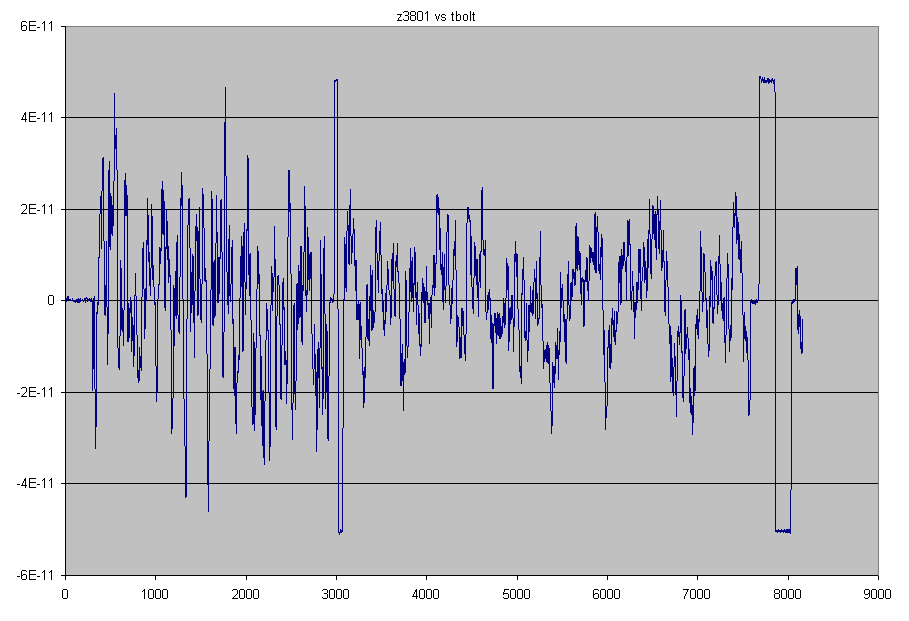
HP-Z3801 nr1 compared to Tbolt nr1. Both locked to GPS
The HP-Z3801 is clocking a HP-3336b synthesizer set to 60 MHz.
The Tbolt is clocking a PTS-250 synthesizer set to 59.999800 MHz.
Synthesizer outputs are mixed and feed to an FT-2000 communications receiver in AM mode.
Since the FT-2000 is set to AM mode RX stability is not an issue .
Audio from the FT-2000 is feed to a standard sound card.
A low audio tone (200 Hz nominal) was chosen to minimize sound card drift. System noise over the medium term is in the low E-13.
The FFT software is Spectrum Lab. Decimate/FFT is set to 16/32k.
The graph is generated with data from SL by Excel.
From point 1 to around 348, the HP-Z3801 is clocking both Synthesizer's to show any offset or noise.
each point is 4 seconds
From around 350 to 3000 the Tbolt Time Constant is 100.
A little before 3000 , both synthesizers are again clocked by the Z3801 and a +/- .003 Hz step is inserted to show the step response.
At around 3000 the Tbolt Time Constant is changed to 400 and again set to clock the PTS-250.
Again near the end the Z3801 is clocking both Synthesizer's and another +/- .003 Hz step is inserted.
Although the Tbolt TC=400 looks better in general, the slow saw tooth component is more visible. This is probably due to the 1 degree temp sensor in this tbolt. I need to verify that with LH, however.
Of course, without a primary standard I have no absolute way to characterize the Z-3801, but in this case it is obvious that the short-term stability of the Tbolt improves when the TC is changed to 400 on the Tbolt.
Note that this plot is derived from 10 MHz frequency, not from pps.
(more plots soon)
CM
Copyright 2009 by Connie Marshall